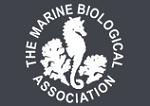APHOTOMARINE
An educational resource dedicated mainly to the photography
and diversity of marine life that can be found in coastal waters
and intertidal areas of Great Britain and Ireland by David Fenwick.

Eulalia clavigera
- worm 1
Greenleaf worm
Eulalia clavigera
- worm 2
Greenleaf worm
Eulalia clavigera
- worm 3
Greenleaf worm
Eulalia clavigera
- worm close-up 1
Greenleaf worm
Eulalia clavigera
- worm close-up 2
Greenleaf worm
Eulalia clavigera
- worm close-up 3
Greenleaf worm
Eulalia clavigera
- dorsal view 1
Greenleaf worm
Eulalia clavigera
- underside 1
Greenleaf worm
Eulalia clavigera
- underside 2
Greenleaf worm
Eulalia clavigera
- lateral view 1
Images of species taken at various locations across the south coast of Cornwall and on rocky shores inside Plymouth Breakwater. Locations include Spit Point, Par, near St. Austell; Battery Rocks, Penzance, Cornwall; at Gyllyngvase, Falmouth, Cornwall, 06.12.14, and at Batten Beach, Mountbatten, Plymouth, Devon.
A common and widespread species, it is often seen crawling across wet rocks and under overhangs on the middle and lowershore; also found within crevices in rock.
N.B. Eulalia viridis has not been found south of the North Sea, in the South West our worms are Eulalia clavigera. It is possible that Eulalia viridis and Eulalia clavigera are both species complexes.
Thanks go to Dr. Arne Nygren and Dr. Andrew Mackie for their help with this genus.
APHOTOMARINE supports open source data recording and sharing for the benefit of wildlife, recorders, research, science and education. The project recommends the following websites and works with the following bodies and organisations.
The Marine Biological Association or MBA, based in Plymouth, is one of the world’s longest-running societies dedicated to promoting research into our oceans and the life they support. Since 1884 the MBA has been providing a unified, clear, independent voice on behalf of the marine biological community.It has a growing membership in over 40 countries.
The National Biodiversity Network or NBN is a charity that supports open source data sharing and recording supporting conservation, science and education. "Why do recorders need open source?". Simply because it supports the core values of wildlife recording and the free use of records and data over a very wide network that includes partners like the Natural History Museum.
The taxonomy used here is based on that of the following database, which is also used by the MBA, NHM and the NBN.
The World Register of Marine Species or WoRMS.

